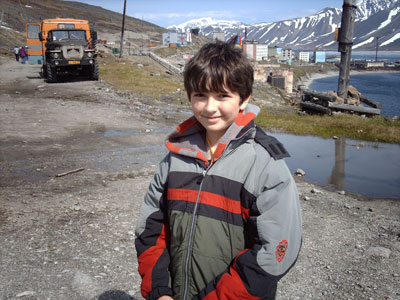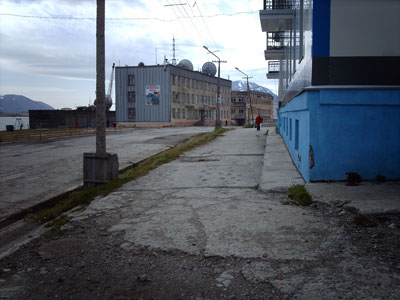Sailing the Bering Sea
The lonely, obscure islands in the 878,000-square-mile Bering Sea — situated between Alaska and Russia — had always drawn me, but the difficulty and expense of visiting them had kept me from making the trip. However, when I discovered that Seattle’s Zegrahm Expeditions (800/ 628-8747) was offering its “Wild Alaska” trip, which included many of these islands, I signed up for the June 18-July 2, 2010, cruise.
The first Russian stop on our cruise on the Clipper Odyssey was in Provideniya, in Siberia. A former Soviet military port on the rugged Chukotka Peninsula, the town was created in the1930s as the port to serve the eastern end of the Northern Sea Route — the treacherous, icebound path along the north coast of the Russian continent — from Murmansk to Anadyr and on to Vladivostok. The town actually lies protected in a fjord but still offers a deepwater, ice-free harbor for ships.
As we approached, I was struck by the brightly painted buildings — pink and blue, yellow and blue, plus the white hospital with its huge red cross. As in many northern towns, the bright colors are an effort by locals to deal with the long and monotonous winter.
On landing, we walked to the museum of local Chukotka history and culture, where our guide, Igor, a former English and geography teacher, led us through fascinating exhibits including maps, photos, umiaks (boats), tools and so on.
Most of the 2,700 inhabitants (down from a high of 6,000) are Yupik, and it is mainly their culture that is reflected in the museum. One especially arresting exhibit dealt with excavations from Kivac, where artifacts over 2,000 years old are a reminder of a circumpolar culture that long predates Soviet or European settlement.
We walked to the lighthouse, passing through a forlorn cemetery full of a few new but many untended old graves — a lonely place to be buried.
We then went to the House of Culture for an excellent performance of song and dance, which started with the class of four- and five-year-old “snow buntings” dressed in elaborate and beautiful costumes. Preteens and teens followed, demonstrating the skill they’d gained through very thorough training in their Russian, Chukchi and Iñupiat routines.
Out of the Bering Sea, there are countless basalt islets jutting up, all the product of violent volcanic outbursts. The few inhabited islands fall partly on the American and partly on the Russian side of the international border.
Much as we would have liked to, it’s almost impossible to visit the Russian islands, including the Commanders, Big Diomede and Karaginsky. There is no regular air connection across the strait, and only a few charter flights operate in the summer. In addition, we were told it is Russian policy to allow only travelers on organized tours, with special visas, if they allow anyone at all.
After our stop in Provideniya, we cruised to most of the American islands, then followed the Aleutian chain up to the Alaskan peninsula, ending in Anchorage.
The Clipper Odyssey is a 110-passenger expedition vessel that carries a fleet of Zodiacs, allowing landings on remote beaches or cruising to search for wildlife. Fortunately, its cabins all are fitted with blackout curtains, since this was the time of the midnight sun, which plays havoc with some people’s internal clocks. Cabins have private facilities, and all meals were included in the price ($16,245, single, including airfare from origin).
Because of the variety of our experiences, the two-week trip seemed more like two years. We traveled through millennia of human culture, ranging from Siberia to Europe to North America, and we saw the product of eons of evolution in the volcanic rocks that provide a home for countless life forms.
Few people ever have the chance to see this part of the world, but for the lucky ones who manage such a visit, the memories last a lifetime.
LYNN REMLY
Hudson, OH


